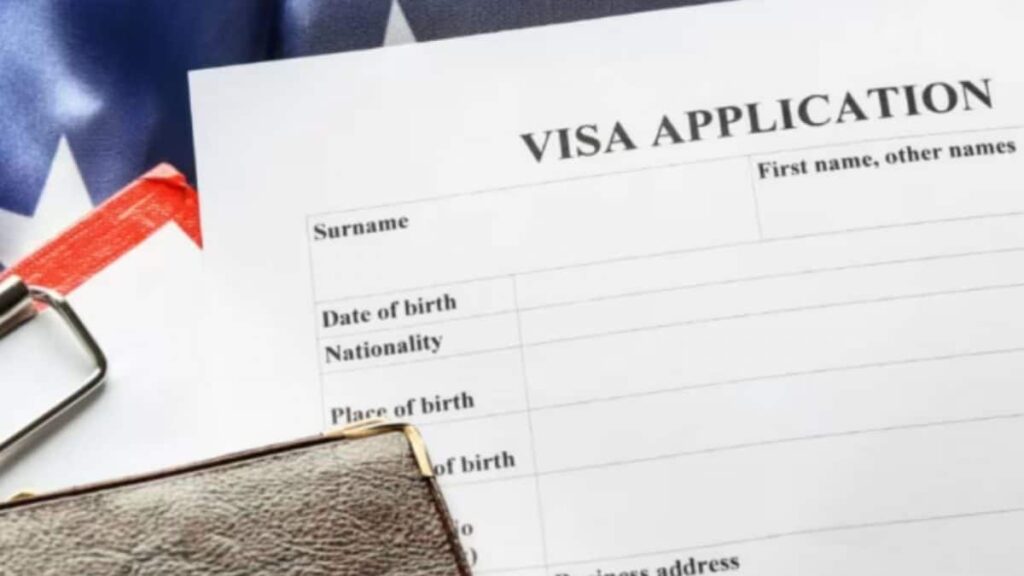Last update:
The EB-5 category visa without highlighting for Indians has backed up for more than six months until May 1, 2019, while in contrast, the date for China remains on January 22, 2014.
The EB-5 category date not reserved for the Indians was backed up for 7 months.
The United States Department of State has published its Visas Bulletin for May 2025, delivering disappointing news for Indian nationals who aspire to ensure H-1B visas and green cards. The newsletter reveals a great setback for the Indians in the category of fifth preference based on employment (EB-5).
According to the Bulletin, the EB-5 Unreeserved category visa for the Indians has backed up for more than six months until May 1, 2019, reducing eligibility for Indian applicants, while in contrast, the date for China remains on November 22, 2014. He.
The ‘final action dates’ refer to the date on which the USCIS can determine if people can submit such visa applications, where it is based on the family or employment.
“The high demand and the use of numbers by India in the categories of Visas not reserved EB-5, combined with an increase in the rest of world demand and the use of numbers, made it necessary to retain further the final date of action of India to maintain the use of the number with the maximum limits allowed,” read.
What about other visa categories?
EB-1 (priority workers): For the first preference category (EB-1) based on employment, there are no changes since the cutting date for India remains on February 2, 2022 and for China, it remains on November 8, 2022. All other countries remain current in this category.
EB-2 (members of the professions who have advanced titles or exceptional skill people): In this category, the State remains the same for Chinese Indians and citizens. The cutting date for India continues to be on January 1, 2013 and for China, is October 1, 2020. The EB-2 cutting date for all other countries remains on June 22, 2013.
EB-3 (qualified workers, professionals and other workers): As for the third preference category (EB-3) based on employment, the cutting date of India advances two weeks as of April 15, 2013, while the China date remains on November 1, 2020. The cutting date for other countries has not changed on January 1, 2023.
EB-3 Other workers: In this category, the cutting date for the Indians is aligned with the EB-3 to April 15 category. For China, the date is April 1, 2017, while for all other countries, it remains on May 22, 2021.
The State Department had announced last year that everyone is available. EB-4 (certain special immigrants) Immigrant visas for financial year 2025 were issued before February 28, 2025. As a result, the EB-4 category is now insecure and will continue to be until the end of the financial year of September 30, 2025.
The EB-5 category refers to other qualified immigrants, or that some requests are reserved for those who invest in rural areas, high unemployment areas and infrastructure projects.
The newsletter also says: “The limit of fiscal year 2025 for preferential immigrants sponsored by the family determined in accordance with section 201 of the Imigration and Nationality Law (INA) is 226,000. Prefibation of prefibly prefibly preferential that the limit per country for preference immigrants is established in 7 percent of the annual total sponsored by the family and employed preference limits, that is, that is, that is, that is to say, that is 25,620.
What does this mean?
Each month, the United States Department of State issues a visa bulletin that lists the cutting dates for the availability of visas by nationality. This newsletter determines which applicants may submit your requests to adjust the status of the visa or the permanent residence.
Applicants with a priority date before the cutting date in the most recent newsletter are usually eligible to request a permanent residence. The visa setback occurs when the number of applicants for a particular visa or country category exceeds the visas available for that month. This occurs towards the end of the fiscal year as the visa issuance approaches the annual category or the limits per country.
Immigration has become an important problem since the president of the United States, Donald Trump, promoted the position in January, with the objective of the largest deportation exercise in the history of the country. While Trump’s policies aimed to limit illegal immigration, they also seem to affect highly qualified immigration.
- Location:
Washington DC, United States of America (USA)

